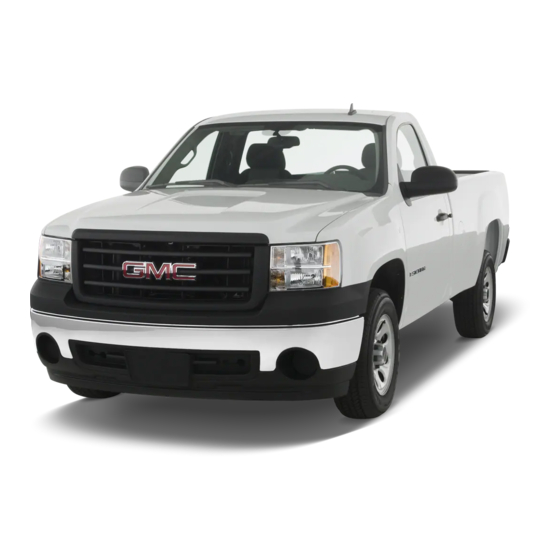
Table of Contents
Advertisement
Quick Links
2008 GMC Sierra Denali Owner Manual
Seats and Restraint Systems ........................... 1-1
Front Seats
............................................... 1-2
Rear Seats
............................................... 1-9
Safety Belts
............................................. 1-10
Child Restraints
....................................... 1-31
Airbag System
......................................... 1-54
Restraint System Check
Features and Controls ..................................... 2-1
Keys
........................................................ 2-3
Doors and Locks
...................................... 2-10
Windows
................................................. 2-15
Theft-Deterrent Systems
Starting and Operating Your Vehicle
Mirrors
.................................................... 2-37
Object Detection Systems
®
OnStar
System
...................................... 2-45
Universal Home Remote System
Storage Areas
......................................... 2-56
Sunroof
.................................................. 2-58
Instrument Panel ............................................. 3-1
Instrument Panel Overview
Climate Controls
...................................... 3-22
Warning Lights, Gages, and Indicators
Driver Information Center (DIC)
Audio System(s)
....................................... 3-76
............................ 1-70
............................ 2-18
........... 2-22
.......................... 2-43
................ 2-49
.......................... 3-4
........ 3-33
.................. 3-52
Driving Your Vehicle ....................................... 4-1
Your Driving, the Road, and Your Vehicle
Towing
................................................... 4-41
Service and Appearance Care .......................... 5-1
Service
..................................................... 5-3
Fuel
......................................................... 5-5
Checking Things Under the Hood
All-Wheel Drive
........................................ 5-45
Rear Axle
............................................... 5-46
Front Axle
............................................... 5-47
Headlamp Aiming
..................................... 5-49
Bulb Replacement
Windshield Wiper Blade Replacement
Tires
...................................................... 5-58
Appearance Care
..................................... 5-98
Vehicle Identification
Electrical System
.................................... 5-108
Capacities and Specifications
Maintenance Schedule ..................................... 6-1
Maintenance Schedule
Customer Assistance Information .................... 7-1
Customer Assistance and Information
Reporting Safety Defects
Vehicle Data Recording and Privacy
Index ................................................................ 1
M
............... 5-10
.................................... 5-52
......... 5-57
............................... 5-107
................... 5-116
................................ 6-2
........... 7-2
........................... 7-14
........... 7-16
..... 4-2
Advertisement
Chapters
Table of Contents














Need help?
Do you have a question about the 2008 Sierra 1500 Pickup and is the answer not in the manual?
Questions and answers